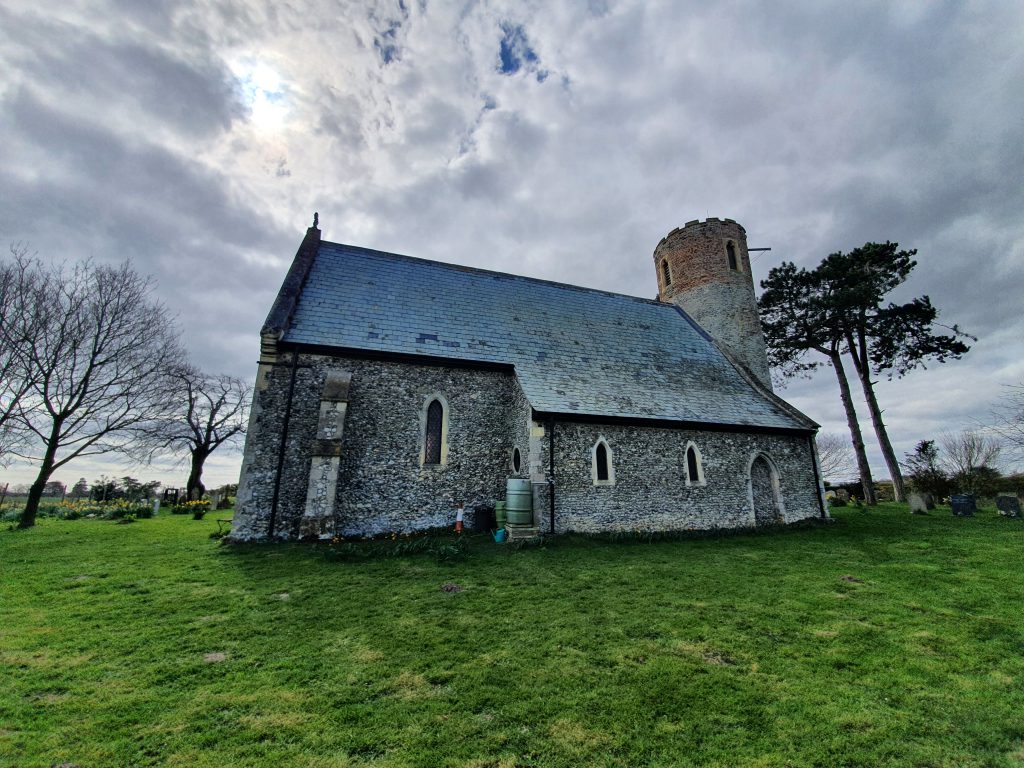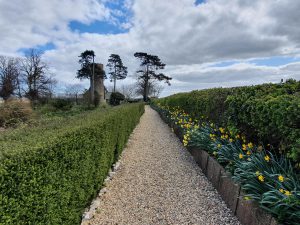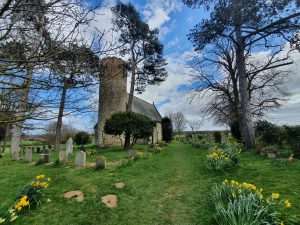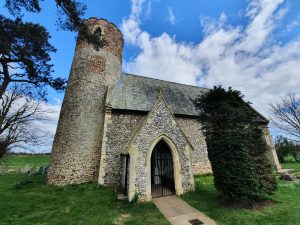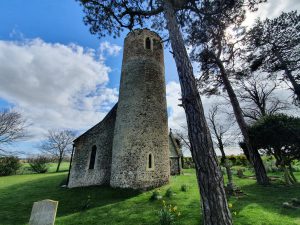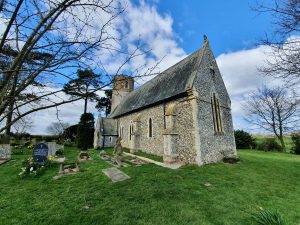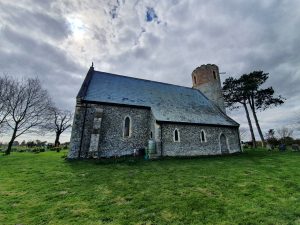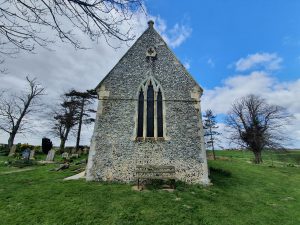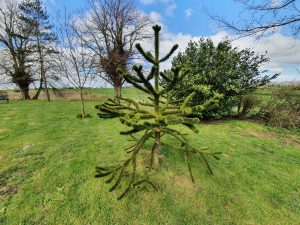Fishley – St. Mary’s Church
The entrance to St. Mary’s Church in Fishley is really quite grand, so much so that I thought I might be walking up a private drive. Although, the village of Fishley is gone, abandoned many centuries ago, so I wasn’t in danger of disturbing anyone. Upton Church is also just a couple of fields away, making this a rather curious survivor in the landscape.
My first impressions of this church were entirely positive, a well looked after churchyard and an interesting round tower. The environment is rural, the countryside was quiet and I was hoping that there might be some heritage to look at.
Unfortunately, the church was locked, and they’ve even bolted the porch door in case anyone might want to sit inside and shelter. There was no keyholder information and I would say at first sight that this was a church just for locals, but there aren’t really any. There was a sign saying that the church is open on Fridays though, so there is at least some access for those who plan ahead. It would also be unfair not to note the considerable work of Ivan Barnard over recent years, and I’ll quote Norfolk Heritage:
“In 2006, undaunted, churchwarden Ivan Barnard set out with his colleagues to restore the site to its former glory by tackling a task at a time, starting one morning by simply mending the church gates. From there, he progressed to showcasing the building through the Open Church Project and various local exhibitions and festivals, raising the total required sum of £110,000 through sponsorship, donations and six grant giving bodies, including English Heritage. The works ran for five years and were completed in 2011 with the repair of the tower, amidst costly episodes of vandalism and even opposition from the Parochial Church Council (PCC).”
Given this problem with vandalism, the desire to keep the building locked does justify their decision somewhat, although goodness knows what the Parochial Church Council were annoyed about. This Ivan Barnard seems like a brave and courageous fighter for heritage and it’s clear he’s put the church in a much better position than it was in before.
The round tower is from the Norman period, with the top section being from the sixteenth century.
Although the tower was left relatively untouched, the rest of the church was heavily renovated in 1861, as part of the national wave of Victorian renovations. Some surviving sections remain though, mostly dating back to around the thirteenth century.
There’s an air of permanence to this church, despite how its congregation has long gone. A coffin lid made of purbeck marble was found in the churchyard in recent years, which it is believed dates from around 1250 to 1350, likely moved outside during the Victorian renovations. There’s more on this story in the EDP.
The chancel end of the church, which looks like it was quite heavily restored in 1861.
Is that a monkey puzzle tree in the churchyard? I have little idea, but it’s unusual. The churchyard is all well maintained and tidy, with a couple of benches in it, perhaps as a compromise for the porch being inaccessible. There were no very old graves that I could find (from before 1800) and one set of family graves appears to have been touched up recently, which is unusual, but more of that in another post.

